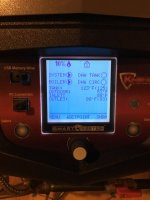Ki23
New Member
Good morning all, I've been reading these forums for weeks and getting great information from them. My situation is a little different as I have a 1978 tri-level house that has a furnace on the second floor only so we can remove that from the equation, I believe. I know how many therms I used per month but it's difficult for me to guess if the therm's are being used by the boiler or my gas furnace (see my dilemma?).
The first floor (1st zone) (900sq ft with 1 bed, 1 bath, and a living room. 100 feet of baseboard)
Third floor (2nd zone) (900 sq ft with 3 bed, 2 baths. 80 feet of baseboard)
Garage (3rd zone) 2.5 car with 45k btu modine hydronic heater running off boiler (heated to 45-50F only)
Gas bill was over $500 in January so I insulated the attic (previously had R19 in attic) and now it's R39. All windows and doors have been replaced with updated efficient models. My current boiler is original to the house and is 200k BTU input, 160k BTU output which seems VERY overkill. If I'm not mistaken I have my house needing just under 80k BTU to heat.
I have had a few contractors come in and they all seem to want to install the Navien 240E combi. After doing all my research and calculations I'm looking more at a mod con boiler with a direct fired 50 gal as we have two small children who need baths.
I was looking at the Lochinvar knight boilers and didn't know if the wall mount/floor mount made a difference. Also I'm thinking the 110N may be better than the 80N because the 110N has a net BTU of 89. Am on I base to make the correct decision here? I'd hate to have a boiler that can't warm my house during these -10 nights.
The first floor (1st zone) (900sq ft with 1 bed, 1 bath, and a living room. 100 feet of baseboard)
Third floor (2nd zone) (900 sq ft with 3 bed, 2 baths. 80 feet of baseboard)
Garage (3rd zone) 2.5 car with 45k btu modine hydronic heater running off boiler (heated to 45-50F only)
Gas bill was over $500 in January so I insulated the attic (previously had R19 in attic) and now it's R39. All windows and doors have been replaced with updated efficient models. My current boiler is original to the house and is 200k BTU input, 160k BTU output which seems VERY overkill. If I'm not mistaken I have my house needing just under 80k BTU to heat.
I have had a few contractors come in and they all seem to want to install the Navien 240E combi. After doing all my research and calculations I'm looking more at a mod con boiler with a direct fired 50 gal as we have two small children who need baths.
I was looking at the Lochinvar knight boilers and didn't know if the wall mount/floor mount made a difference. Also I'm thinking the 110N may be better than the 80N because the 110N has a net BTU of 89. Am on I base to make the correct decision here? I'd hate to have a boiler that can't warm my house during these -10 nights.
Last edited:


